"The kiwi-berry harvest season began half a month earlier in comparison with the previous year. We began harvesting our first early-season varieties on July 26th and finished by the end of August. We grow 6 different kiwi-berry varieties to spread our harvest season and extend our supply season. Our production volume this season was much lower than expected. The reason for this development is that we were unable to avoid the influence of extreme weather conditions, such as heavy rainfall and two floods. This obviously affected our farmlands and therefore affected our production volume." This is according to Fan Jinming of Chengdu Yu Agricultural Science and Technology Co., Ltd.
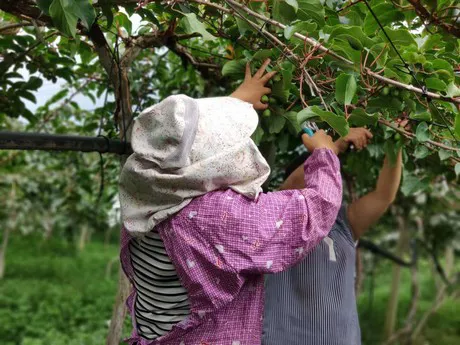
Kiwi-berry orchard
"Kiwi-berries are popular in the Chinese market. This year, however, our production volume is small. We only produced around 12 tons. Yet we still have no alternative but to sell everything at a relatively stable market price. Our production season in Sichuan is also different from the kiwi-berry production season in north China. Kiwi-berry orchards in the north begin harvest season in early September or early October. Our production season do not overlap, which is an advantage for us, because it means that there is no direct competition. This really improves our sales conditions."
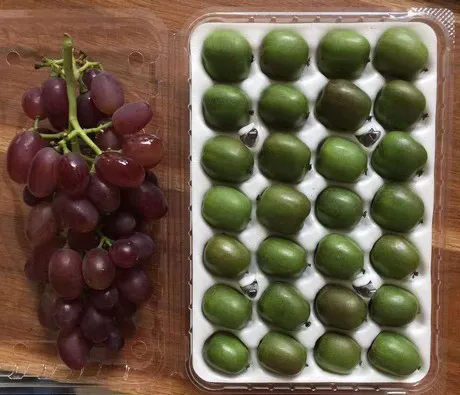
Kiwi-berries (right)
"We quickly store kiwi-berries immediately after they are harvested. It only takes two hours between harvest and storage in pre-cooled warehouses. The temperature in these pre-cooled warehouses is half the outside temperature, generally around 15 degrees Celsius. The selection of kiwi-berries takes place in these pre-cooled warehouses. The high-quality kiwi-berries go into long-term storage where the temperature is kept around 2 degrees Celsius, which is much colder than the first pre-cooled warehouse. We store kiwi-berries at these temperatures to guarantee that the fruit quality does not deteriorate. The kiwi-berries remain in these cool warehouses for 3-5 days and are then transported to our buyers. We expected to sell off all our stock this year in about 7-8 weeks, but, much to our surprise, we were completely sold out in 5 weeks. This clearly shows that kiwi-berries are in much demand, and we look forward to next year with much anticipation."
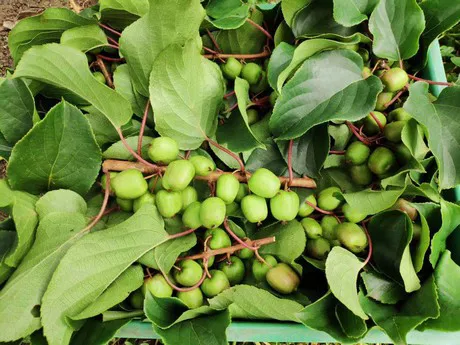
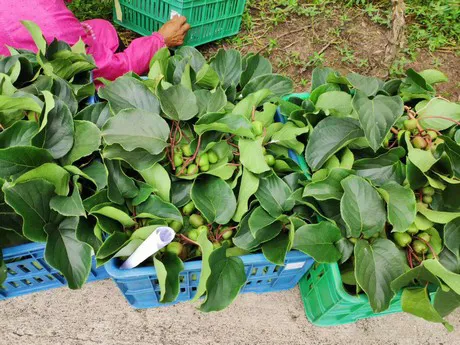
"We have also begun to cooperate with other kiwi-berry traders, to share our knowledge and technology with them, and help them reach greater volumes of higher-quality kiwi-berries. We sell kiwi-berries under our own brand 'Mei Mei', but with the help of other kiwi-berry producers we could greatly increase our production volume. Our own trees are still relatively young and our kiwi-berry production volume will greatly increase in the next few years as our trees mature. We expect our production volume to increase five-fold next year, and based on that assumption we are planning to export kiwi-berries to Southeast Asia. At present, we only supply the Chinese domestic market, but interested importers from Hong Kong and Southeast Asia can approach us to discuss future cooperation."
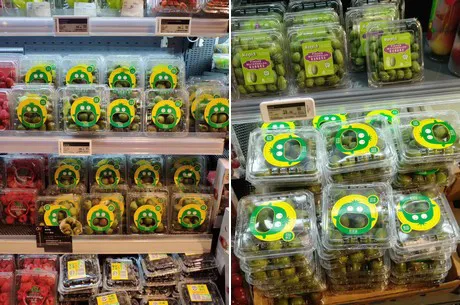
Fan Jinming
Company name: Chengdu Yu Agricultural Science and Technology Co., Ltd.
Tel: +86 133 5056 6918
E-mail: fan@inno-fresh.com
www.kiwi-berry.cn
